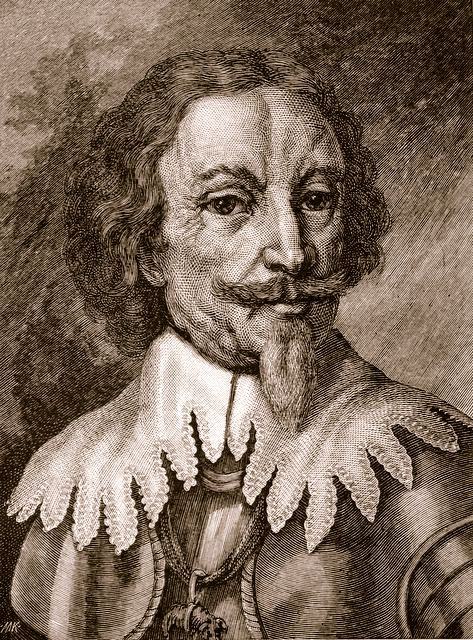
Imperial and mercenary cavalry general. Raised a Lutheran, Pappenheim converted to Catholicism and served the Catholic side in the Thirty Years’ War. Like Gustavus Adolphus Pappenheim was a student of Polish cavalry tactics, preferring their aggressive shock techniques to the overly dainty caracole. He taught Polish skills to his regiment of cuirassiers. He fought in Bohemia and the Rhineland from 1618 to 1622, and in Italy. At the head of a Bavarian army he savagely repressed a peasant uprising in Upper Austria (May–November 1626). This accorded with a general reputation throughout his career for brutality, pillaging, and rough enforcement of contributions. It was Pappenheim who stormed and sacked Magdeburg (May 20, 1631), butchering its population in the worst atrocity of an atrocious war. At First Breitenfeld (1631) a precipitous charge by his cuirassiers unsettled the Imperial lines, but then his troopers broke and ran before Gustavus’ musketeers and a counterattack by Finnish horse. He nearly won the day with a late charge into disarranged Swedish horse at Lützen (1632), but was instead killed by a cannonball. His men galloped off and the battle was lost.
Imperialist Cuirassier c. 1630
After 41 years of war, peace was made between Spain and the Netherlands in 1609. Part of the rich Dutch provinces had liberated themselves from Spanish rule and gained independence: the small professional Dutch army, commanded by Maurice of Nassau, stood against a world power. The most significant changes in the Dutch War of Independence were implemented in the cavalry. In 1597, out of a total of 11 ensigns of lancers (1,200 men in all), eight were converted to pistol-armed cuirassiers, and three to arquebusiers. The heaviest cavalry units rejected the lance in favour of firearms. The same year, at the Battle of Turnhout, the Dutch cavalry, practically on their own, routed Spanish cuirassiers armed with lances and infantry with long pikes.
From the Dutch border to Poland on the west and Turkey to the south were the semi-independent states dominated by the Austrian Habsburg dynasty. This whole area of central Europe, known for centuries as the Holy Roman Empire, was ruled from Vienna by the Austrian emperor, and the soldiers in his service were called simply ‘imperialists’. To distinguish themselves from other soldiers, they wore a red sash around their waists or over their shoulders and an oak twig in their helmets or hats.
At the turn of the century, imitating their Dutch counterparts, the imperial cuirassiers abandoned the heavy lance and began to use a pair of pistols. More reliable and lighter firearms were one factor which would shape their future strategy; another was the formation of infantry units several thousand men strong, half armed with muskets and arquebuses, the rest protecting them from heavy cavalry attacks with six-metre pikes.
In the early seventeenth century, the imperial works began producing armour which discarded all superfluous parts but strengthened the back and breastplates and headgear. Because of the materials used, cavalry armour became heavier and more massive. The heaviest models extant today are on show in the Landeszeughaus museum in Graz; they weigh 42 kg/90 lb. Their surface is unornamented, and their form not as refined as in previous phases: protection of the wearer against the improved firearms was paramount.
Cuirassiers played a prominent role in the Thirty Years War, commanded by Field Marshal Gottfried Pappenheim (1594-1632) and Albrecht Wallenstein (1583-1634). Pappenheim formed up his cuirassier regiments, about 1,000 men strong, in ten files of 100 men, stressing depth and narrowing the front. Wallenstein, on the other hand, disposed his units, of about the same strength, in six ranks emphasizing the initial strike over a wide front; his method was more successful.